
| Publisher: | Custom House | |
| Genre: | Humorous, General, Literary, Coming of Age, Fiction, Historical | |
| ISBN: | 9780063052291 | |
| Pub Date: | May 2021 | |
| Price: | $27.99 |
| Starred | Fiction |
by Jessica Anya Blau
"I had just turned fourteen, it was 1975, and my ideas about home, furniture, and cleanliness ran straight into me like an umbilical cord from my mother." In the upper-crust Baltimore neighborhood of Roland Park, Mary Jane's emotionally distant father thanks God every night at the dinner table for giving him an obedient child. Her world is exceedingly neat and regimented, until she begins working as a summer nanny for the Cone family down the street. This is the summer that will change everything for the protagonist of Jessica Anya Blau's Mary Jane.
Mary Jane's first-person narration and extremely limited experience of the world make this story both poignant and tremendously funny. While her own family oozes Stepford-style 1950s values, the Cones are consistently barefoot and scantily clad, and their home is a shock. "I'd never before been in a house where every space was crammed with things to look at or think about." Mary Jane's charge, Izzy Cone, is a completely delightful five-year-old girl with untamed curls, copious energy and few boundaries. And then Dr. Cone (a psychiatrist) moves a patient and his wife into the guest quarters. They turn out to be a heroin-addicted rock star and a movie star. Mary Jane finds herself newly enfolded in boundless affection, acceptance, good humor and nonstop (mostly harmless) shenanigans. How will she reconcile this wild, disruptive, noisy new world with the life she's known?
Mary Jane is unendingly charming and fun. Blau's appealingly naïve narrator is at her best when she wonders at the colorful world that emerges in this enchanting novel about personal growth and changing times. --Julia Kastner, librarian and blogger at pagesofjulia
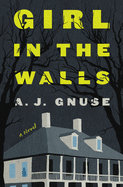
| Publisher: | Ecco | |
| Genre: | Family Life, General, Literary, Coming of Age, Fiction | |
| ISBN: | 9780063031807 | |
| Pub Date: | May 2021 | |
| Price: | $27.99 |
| Fiction |
by A.J. Gnuse
Eddie's books disappear. His older brother Marshall's Pop-Tarts vanish. Creaking stairs, thumping walls and more missing objects cause bitter accusations and screaming denials between the brothers. Their parents can't understand their kids' hostility, nor why things aren't always where they left them. Eavesdropping just out of sight, the girl in the walls chides herself to be more careful in this disquieting coming-of-age story.
Just outside New Orleans, 11-year-old Elise wanders barefoot away from a car accident toward the house she grew up in, where her father taught her to explore the crawlspaces. Elise enters without a key, slipping deftly behind the walls. Nick and Laura Mason live there now with their sons. Eddie spends his time reading novels of fantasy and myths while Marshall sticks to death metal music and pushups. Elise roams the house while the family is out. She's cautious, but eating and reading are essentials. Eddie isn't sure if Elise is real or imaginary, but Marshall befriends a guy online named Traust who swears there are people living within the walls of houses all over the country. Traust offers to capture the Mason resident trespasser as long as he can keep her. Elise can either leave immediately and live, or stay to fight for the only place she ever felt loved. Suddenly she's out of options--a hurricane overflows the levees and Elise's beloved childhood home lies directly in the path of destruction.
A.J. Gnuse's first novel, Girl in the Walls, gathers a damaged, plucky tween and an angst-ridden family and throws a hellacious storm at them, but still lets a little hope peek from behind the darkest clouds. --Paul Dinh-McCrillis, freelance reviewer

| Publisher: | One World | |
| Genre: | Urban & Street Lit, Coming of Age, Fiction | |
| ISBN: | 9780593134320 | |
| Pub Date: | May 2021 | |
| Price: | $18 |
| Fiction |
by Ishle Yi Park
Poet/singer Ishle Yi Park crafts an elegiac debut novel-in-verse featuring star-crossed teens, a "rebel/ Romeo & Juliet." From the opening line of Angel & Hannah, Park immediately commands complicity in sharing something secret involving diverse backgrounds: "Psst," she warns, "Ven acá. Illuwah"--"come here," in Spanish, then repeating "come here," in Korean. The eponymous lovers-to-be are just 16 in the spring of 1993, when they first meet "in the heart of Jamaica, Queens." Angel is Puerto Rican, goes to Aviation High School (albeit sporadically) and dreams of flying. Hannah has been the high-achieving "good girl" all her life, pleasing her Korean immigrant parents, protecting her mother from her father's relentless violence.
Love is an escape for both. Park segments their (d)evolving romance to parallel the seasons: the newness of "Primavera," the heat of "Verano," the changes of "Otoño," the ending of "Invierno." Hannah can't keep Angel from her strict parents, whose rigidity pushes her out until she's living in Angel's chaotic home. But Angel's mother welcomes her, his little brother adores her. Reality, though, is undeniable and drugs, poverty, betrayal, death, loss will destroy. By the end, Park alludes to rebirth on a faraway island.
Hawaii is where Park (The Temperature of This Water) currently lives. In Angel & Hannah, she returns to the New York City of her birth, where she was the first woman to be named Poet Laureate of Queens, from 2004 to 2007. Her youthful cast here, their generational and cultural struggles, could easily resonate with mature teen readers; adult audiences longing to reminisce, to be immersed in all-encompassing, cascading emotions of first love, will be enthralled. --Terry Hong, Smithsonian BookDragon

| Publisher: | Doubleday | |
| Genre: | Legal, Suspense, Political, Thrillers, Fiction | |
| ISBN: | 9780385546577 | |
| Pub Date: | May 2021 | |
| Price: | $28 |
| Starred | Mystery & Thriller |
by Stacey Abrams
With While Justice Sleeps, Stacey Abrams (Lead from the Outside) marks her first foray into the political thriller genre--bringing her experience with courts, politics and the justice system to a world of imagined suspense and intrigue, with great success.
Supreme Court Justice Howard Wynn has few family ties. He has dedicated his life, instead, to his role on the Supreme Court, and to his definition of justice. "He felt equally dismissive of willful ignorance--his description of the modern press--and smug stupidity, his bon mot for politicians." Avery Keene serves as Justice Wynn's law clerk, overworked and underpaid while juggling care for her mother, who suffers from drug addiction and pops in and out of Avery's life.
When Justice Wynn slips into an inexplicable coma, his papers shockingly name Avery his legal guardian. And as people around Justice Wynn start to disappear or turn up dead, Avery quickly realizes she's in deeper than she thought possible. She is drawn into an international plot surrounding the possible merger of an American tech company and Indian genetics research lab in a Supreme Court case, for which Justice Wynn was set to be the swing vote.
There are a lot of layers to the central mystery of While Justice Sleeps, which can feel labyrinthine at times. But a bit of patience is more than worth it, as Abrams weaves a suspenseful tale of politics and power that feels grounded in the realities of American politics--even while the case and story surrounding it are purely fiction. --Kerry McHugh, blogger at Entomology of a Bookworm
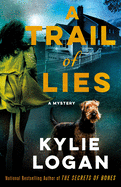
| Publisher: | Minotaur Books | |
| Genre: | Mystery & Detective, Amateur Sleuth, Fiction, Women Sleuths | |
| ISBN: | 9781250768636 | |
| Pub Date: | May 2021 | |
| Price: | $26.99 |
| Mystery & Thriller |
by Kylie Logan
Kylie Logan blends a lively amateur sleuth tale with a harder-edged police procedural that delves into family dynamics in A Trail of Lies, her third novel about Jazz Ramsey (The Secret of Bones). An administrative assistant to Sister Eileen Flannery, principal of Cleveland's St. Catherine's Preparatory Academy for Girls, Jazz volunteers in her spare time to train and handle cadaver dogs who find dead bodies for the police.
Her latest Human Remains Detection (HRD) dog--the adorable and rambunctious Wally--gets his first trial when Jazz tries to help Kim Kolesov, the mother of her police detective boyfriend, Nick. Kim is convinced she has murdered a man and his body is in her backyard, and that someone has been spying on her and trying to break into her home. Jazz is hardly surprised when Wally, her seven-month-old Airedale, finds no whiff of any remains because she didn't believe Kim's story, as the woman was a paranoid alcoholic given to delusions. Still, Kim is "part of the package" that comes with Nick, and Jazz promised to look after his mother while he is away on an undercover assignment. Jazz begins to reevaluate Kim's story when the body of a newly paroled convicted murderer turns up in a neighborhood park.
The highly entertaining A Trail of Lies gets a boost from the appealing Jazz and the equally believable supporting characters, complemented by crisp dialogue. Although readers will want to spend more time with Wally and the intricacies of HRD, Logan's affinity for realistic, well-paced storytelling gives A Trail of Lies an extra bite. --Oline H. Cogdill, freelance reviewer
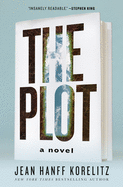
| Publisher: | Celadon | |
| Genre: | Psychological, Family Life, Crime, Domestic, General, Suspense, Thrillers, Fiction | |
| ISBN: | 9781250790767 | |
| Pub Date: | May 2021 | |
| Price: | $28 |
| Mystery & Thriller |
by Jean Hanff Korelitz
Jean Hanff Korelitz's staggeringly good literary thriller The Plot begins as New Yorker Jacob Finch Bonner arrives at his three-week teaching gig at a low-residency MFA program in Vermont. It feels like--and is--a step back for "the once promising author of the 'New & Noteworthy' (New York Times Book Review) novel The Invention of Wonder." Jake's writing career is at a standstill: his follow-up to The Invention of Wonder tanked, and he hasn't published since.
One consolation of his teaching job is that Jake knows his work is at least a cut above the puerile prose of his students--that is, until, during a teacher-student chat, Evan Parker shares aloud a synopsis of his planned novel. Jake can't disagree with Evan's appraisal: "This story I'm writing, it's like, a sure thing." But the prospect of its publication would seem to evaporate with Evan's death, which Jake learns about while poking around on the Internet a couple of years later.
Fast-forward three more years, and Jake, having convinced himself of the uprightness of stealing Evan's plot ("A great story... wanted to be told"), finds his name on the cover of two million copies of the New York Times bestseller Crib. Jake is certain that only he knows the book's origin--until the day he receives a disturbing e-mail, the first of several of an increasingly worrisome kind.
Korelitz (You Should Have Known) demonstrates masterful control with her incremental release of big reveals. As they did in the fictional universe of The Plot, Oprah and Spielberg would do well to rally around Korelitz's lollapalooza. --Nell Beram, author and freelance writer

| Publisher: | Ballantine | |
| Genre: | Women, Sagas, Romance, Contemporary, Fiction | |
| ISBN: | 9781524798789 | |
| Pub Date: | May 2021 | |
| Price: | $27 |
| Romance |
by Nancy Thayer
The bonds of family and friendship--however loving and limiting--are recurrent themes in Nancy Thayer novels (Girls of Summer; Surfside Sisters). In Family Reunion, she returns to her beloved Nantucket and delivers a tender, multi-generational saga about the Sunderland family, who have had a beach house on the island for generations.
Eleanor, the widowed matriarch, is disappointed when her best friend makes plans with her husband, leaving Eleanor to fend for herself all summer. When Eleanor's adult children, Cliff and Alicia, who both live in Boston and visit their mother on the island, learn this news, they become determined to convince Eleanor, in her 70s, to sell the multi-level house and move to senior housing. Eleanor resists, knowing that her children, while well intentioned, also have designs on acquiring proceeds from the sale. For Eleanor, however, the house has a value more precious than money--it is her home and holds a lifetime of cherished memories.
Eleanor gets a reprieve from her children's plot when her granddaughter Ariana (Ari)--Alicia's offspring--a recent college graduate who called off her wedding, asks Eleanor if she can spend the summer. The two women--generations apart, yet immensely compatible--both step out in exciting directions, leading to new romantic relationships that ultimately empower them.
Thayer thoroughly understands the nuances of family and the not-always-sincere and altruistic motivations therein. She layers in a host of contemporary complications and subplots that will satisfy readers in search of escapist, yet thought-provoking, domestic fiction. --Kathleen Gerard, blogger at Reading Between the Lines
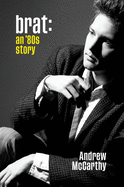
| Publisher: | Grand Central | |
| Genre: | Biography & Autobiography, Personal Memoirs, Entertainment & Performing Arts, Acting & Auditioning, Performing Arts | |
| ISBN: | 9781538754276 | |
| Pub Date: | May 2021 | |
| Price: | $28 |
| Biography & Memoir |
by Andrew McCarthy
Actor, director and writer Andrew McCarthy (The Longest Way Home) focuses on his first decade as a young actor in this insightful and intimate memoir, examining "a time that has been willfully ignored by me for so long." He was 19 when he co-starred with Rob Lowe and Jacqueline Bisset in Class, and although that film fizzled, he quickly found popularity with hits St. Elmo's Fire, Pretty in Pink, Mannequin and Weekend at Bernie's. "I'd already started to develop a mask of aloof detachment that brought me some distance from the acute fear I felt in many situations," McCarthy writes. He also self-medicated his anxieties with pot, prescription drugs, cocaine and especially alcohol.
For a very private person, McCarthy is surprisingly open about his insecurities, isolation, alcoholism and strained interactions with his father ("Money would grow to define our relationship," he writes, "and his hunger for cash would not be satisfied"). He had an "uneasy alliance" with St. Elmo's Fire director Joel Schumacher, and that marked the time he began drinking alone, but his confident performance made him into a leading man. It also brought him and an expandable number of cast mates the label of "Brat Pack." The dismissive label seemed to carry more weight in McCarthy's mind. After more than three decades, he finally embraces the term: "It was a stigma that ultimately transformed into a loving moniker, a term of great and enduring affection."
Brat is a courageous and very public self-analysis of a very successful but unhappy decade in Hollywood's fast lane. --Kevin Howell, independent reviewer and marketing consultant

| Publisher: | FSG Originals | |
| Genre: | Biography & Autobiography, Feminism & Feminist Theory, Gender Studies, General, Women's Studies, Social Science | |
| ISBN: | 9780374539290 | |
| Pub Date: | May 2021 | |
| Price: | $15 |
| Social Science |
by Virginie Despentes, trans. by Frank Wynne
Originally published in France in 2006, King Kong Theory by Virginie Despentes (Vernon Subutex 3; Bye Bye Blondie) remains astoundingly relevant. A feminist manifesto, societal indictment and memoir, this infuriating social commentary shares enraging observations about gender.
Despentes--writer, filmmaker, punk and former hooker--cleverly equates King Kong with the inner beast killed in a woman so she can fulfill her gender role. The "overmarketing of femininity" reassures men they hold more power; simultaneously, celebrated "masculinity" reminds men of their "irrepressible urges" and strength absent frailty. This power structure is why Despentes never pulled her switchblade while three men raped her and her friend. It also influences Despentes's discussion of prostitution, including how it is stigmatized for female sex workers, who should be married to enjoy sex, and male clientele, whose sexuality creates so-called "victims." Anti-porn efforts, too, are cited as a way desire is policed, particularly for women, for whom masturbation and sexual exploration means dangerous "contact with [her] wild side." "Womanhood is whoredom," she concludes: "Walk into a room, check to see whether there are any men present, do your best to please them." What she proposes is a gender revolution to free everyone from being fearfully entrenched in nonexistent archetypes.
Despentes writes with brilliance, anger, balance and purpose. In citing her attacked book (Baise-Moi), banned film adaptation and experience as a sex worker, she corroborates her central idea: capitalism "subjugates us all" by devaluing any woman's existence that isn't for men. With striking rhetoric, unabashed fury and resonating convictions, Despentes rallies women excluded from existence to her vision of demolishing broken systems. --Samantha Zaboski, freelance editor and reviewer
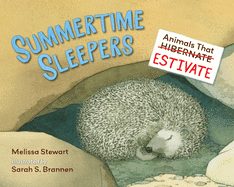
| Publisher: | Charlesbridge | |
| Genre: | Animals, General, Science & Nature, General (See Also Headings Under Animals or Technology), Juvenile Nonfiction | |
| ISBN: | 9781580897167 | |
| Pub Date: | April 2021 | |
| Price: | $16.99 |
| Starred | Children's & Young Adult |
by Melissa Stewart, illust. by Sarah S. Brannen
Employing her splendid talent for making science cool, Melissa Stewart (Can an Aardvark Bark?) introduces young readers to creatures that go dormant not through the winter, but during the summer. Hibernation is a well-known concept; estivation less so. Stewart aims to change that. Her enthusiasm for these unfamiliar snoozers, combined with stunningly realistic watercolor illustrations by Sarah S. Brannen (illustrator of Stewart's Feathers: Not Just for Flying), make summer sleepers the superstars in the charming nonfiction picture book Summertime Sleepers: Animals that Estivate.
The main text offers general groupings of animals that estivate: "Some hard-shelled creatures climb up high for a nap.../ ...while others doze underground." Then, in secondary narratives, specific critters take the spotlight: "When the days grow long and hot, land snails cling to tree branches and seal their shells shut. Their heart rates slow, and they barely breathe as they wait for cooler days." To offer even more information for eager learners, a black-and-white logbook page appears amid the lush colors of the illustrations. The page includes the animals' scientific names, sizes and detailed sketches an observer might record while watching them.
Brannen's art is as captivating as the information it illuminates. The lifelike depictions include vital intricacies--variegated shading on the shells of the snails, wisps of whiskers on the yellow-bellied marmot--as well as a sense of depth and texture. The illustrations are not only incredibly enjoyable, they're also accurate and informative. Summertime Sleepers is a gem that should spark children's interest in science, in the world around them and in the joy of learning. And what better bedtime reading than a book that features everyone sleeping? --Jen Forbus, freelancer

| Publisher: | Annick Press | |
| Genre: | Art, People & Places, Indigenous, Customs, Traditions, Anthropology, Young Adult Nonfiction, Fashion, Social Science | |
| ISBN: | 9781773214900 | |
| Pub Date: | April 2021 | |
| Price: | $19.95 |
| Children's & Young Adult |
by Christian Allaire
Vogue fashion and style writer Christian Allaire, using a multitude of contemporary references, skillfully challenges traditional beauty norms and fashion biases in his nonfiction YA book, The Power of Style.
Allaire, who is Ojibwe from Nipissing First Nation, breaks down how artists, influencers and vloggers are creating products and accessories that make space for more diversity in the makeup, hair, clothing and shoe industries. He particularly emphasizes the notoriety certain beauty icons are able to achieve by harnessing their identities as a magnet for change: "We're at a time when cultural pride and activism are more important than ever, and should you be interested in all things style, it's an opportune moment to use what you wear for a larger purpose." Alongside candid interviews with "creativepreneurs"--such as men's heel brand co-founders Henry Bae and Shaobo Han; Halima Aden, the first hijab-wearing Muslim supermodel; and Native fashion maven Bethany Yellowtail--Allaire draws on his own experience gradually integrating his marginalized heritage into a professional setting that lags in terms of adequate representation. He "discovered that Indigenous design is about more than creating a garment. It's about maintaining traditional craft and honoring your family's roots."
Throughout, multicolored infographics that provide additional background information on topics such as ribbon work, hair braiding, body positivity, henna art and modest fashion are positioned next to striking photos. Allaire's YA debut is a breakout comprehensive guide that works to redefine beauty and highlight the strength and fabulousness in inclusion. --Rachel Werner, Hugo House and The Loft Literary Center faculty